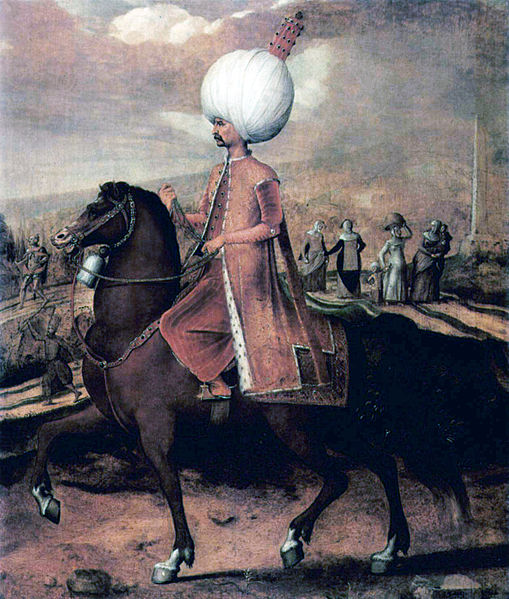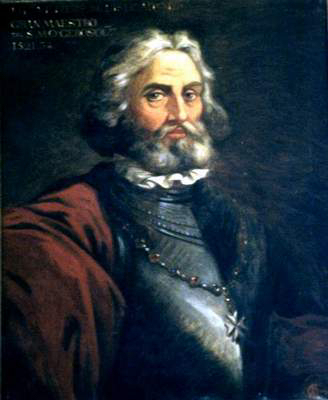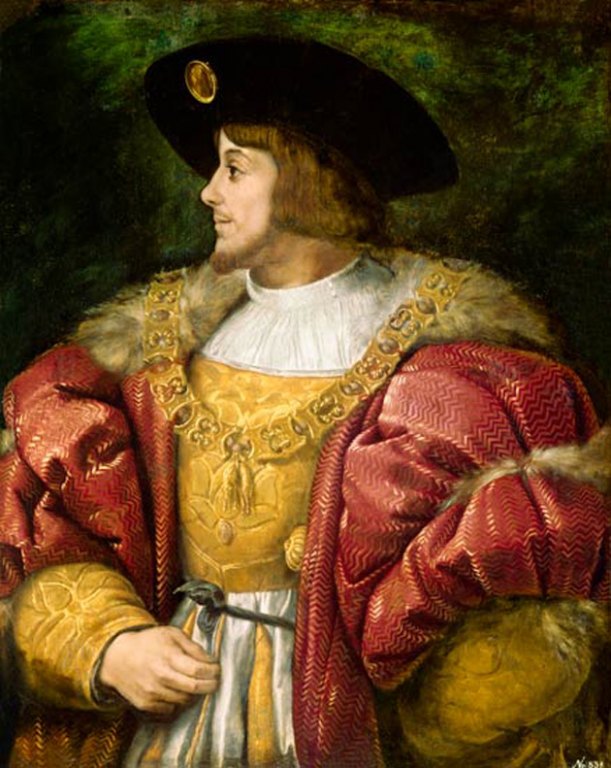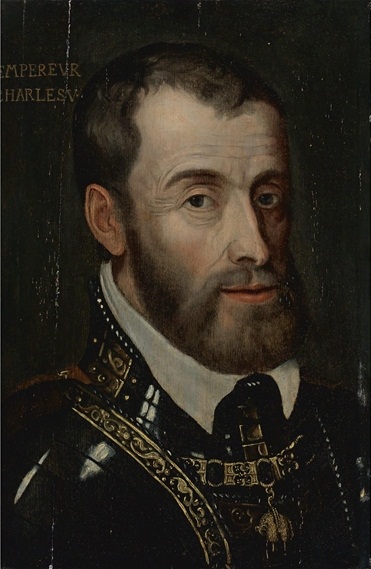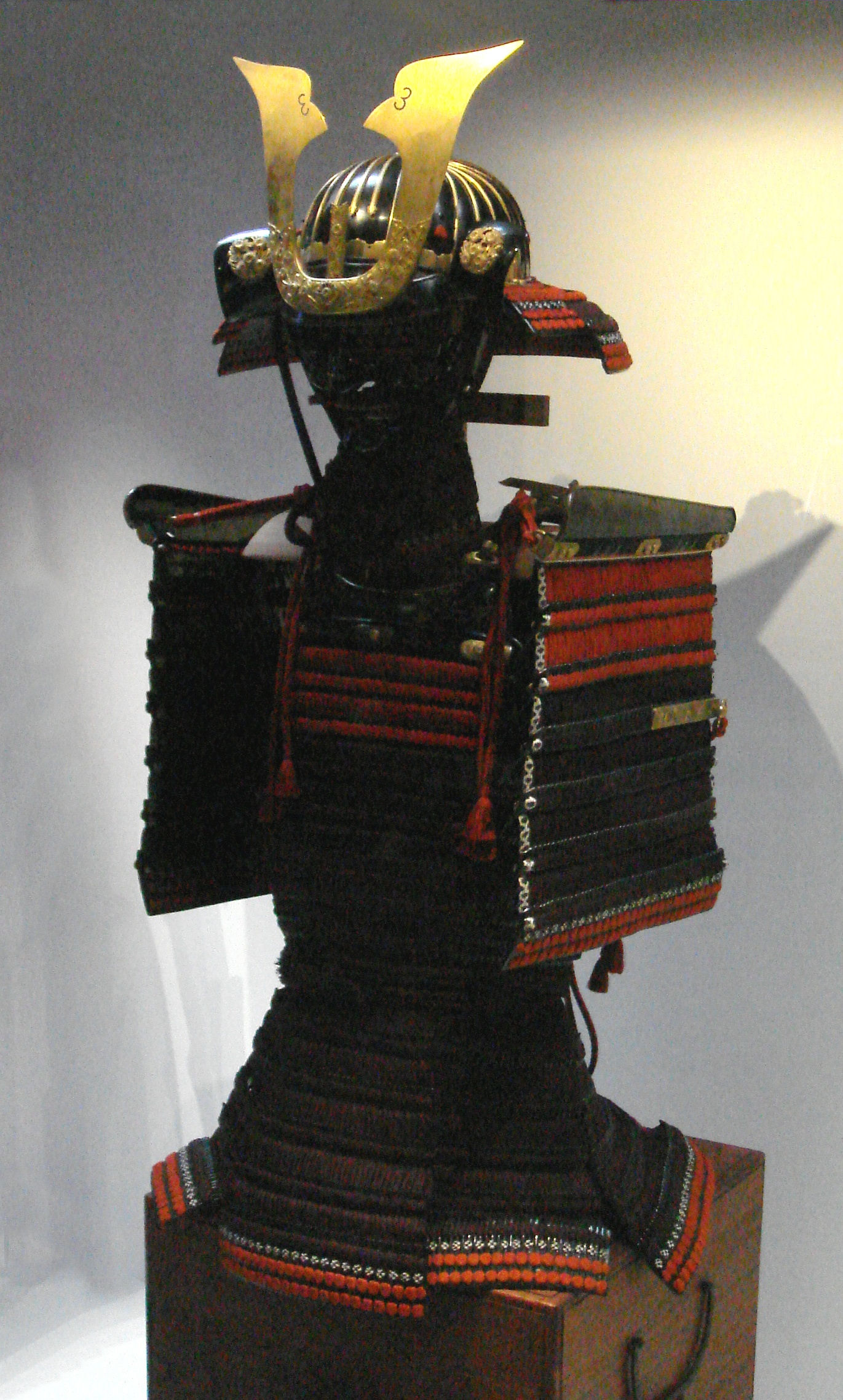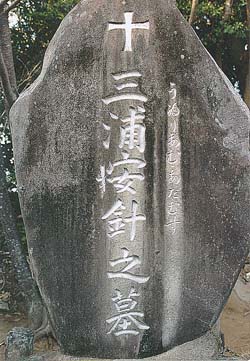 |
| Ferdinand |
Hearing of
Suleiman’s support for his rival; Ferdinand sent his envoy to Istanbul, where
he demanded the return of all territories captured by the Ottomans. The envoy
was imprisoned for nine months before being returned to his master with a
message from Suleiman.
‘Your master has yet to
experience what I am like as a friend and a neighbour – but he soon will. Tell
him that I will come to find him in full force and I think I will be able to
return to him with my own hands what he lays claim to. He should get everything
ready to receive us.’[i]
On the 10th
May 1529 Suleiman set out on his third foray into eastern Europe. He met with
John Zapolya at Mohacs and then travelled on to Buda, which was filled with
Ferdinand’s supporters. After a six day siege Buda was again in the hands of
the Ottoman Turks. The Janissaries were not allowed to sack the town; instead
they carried off huge numbers of slaves. The following week John Zapolya was
installed as king of Hungary, a vassal of the Ottoman Empire.
Suleiman now
set his sights on Vienna and on 27th September 1529 the Ottoman army
arrived before the gates of the city. The delay in arrival meant that the siege
was abandoned with the onset of winter.
The Sultan’s Personal Life
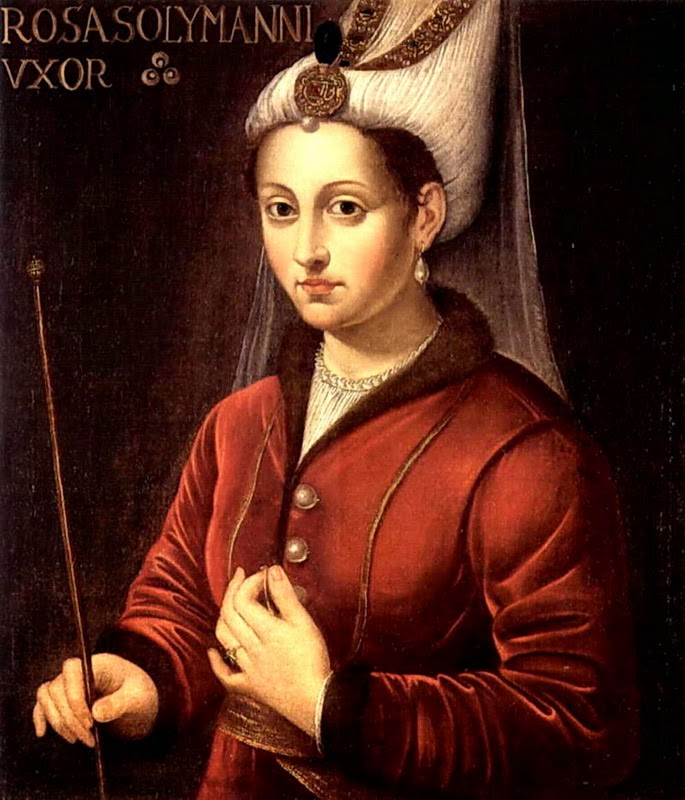 Suleiman had
two intimates, his Grand Vizier Ibrahim and his wife Hurrem Sultana[ii] a slave of Ruthenian
origin. Roxelana bore Suleiman four sons. On her arrival in the seraglio
Roxelana had a cat fight with Gulbahar, the Chief Sultana and the mother of
Suleiman’s son Mustafa. After the fight Suleiman was no longer intimate with
Gulbahar.
Suleiman had
two intimates, his Grand Vizier Ibrahim and his wife Hurrem Sultana[ii] a slave of Ruthenian
origin. Roxelana bore Suleiman four sons. On her arrival in the seraglio
Roxelana had a cat fight with Gulbahar, the Chief Sultana and the mother of
Suleiman’s son Mustafa. After the fight Suleiman was no longer intimate with
Gulbahar.
Following a
fire in the Old Seraglio Roxelana moved bag and baggage into rooms in the
Topkapi, ending the separation of the Harem and the state, with disastrous
long-term consequences for the future of the empire[iii].
‘A most extraordinary event took
place this week in the town, absolutely unprecedented in the reign of the
sultans. The Great Lord Suleiman has taken for his empress a woman called
Roxelane, of Russian origin, amid much rejoicing………………everybody is talking
about the marriage, but nobody is sure what it means’[iv]
Roxelana’s
influence started long before her wedding and continued to her death. She was a
jealous woman and resented Ibrahim’s influence on her husband and she also
resented her sons’ half brother Mustafa. Roxelana received gifts from foreign
ambassadors and leading dignitaries of the empire, many of whom owed their
appointments to her intercession.
In 1530 the
Doge of Venice was invited to attend the festivities for the circumcision of
Suleiman’s sons Mustafa, Selim and Mehmed. The Doge refused on account of his
age, but sent an envoy extraordinary as well as the Venetian Ambassador. The
celebrations went on for fourteen days and were possibly the greatest example
of conspicuous consumption in the Empire’s history.
Reforms in Law, Religion and Education
Suleymaniye Mosque
As a
religious man Suleiman upheld the belief that a ruler’s first duty was to
protect his subjects against the abuses of his representatives. He was also the
defender of Holy Law. Even Christians agreed that Suleiman had an elevated
sense of justice.
Suleiman and
his staff, including the Chief Ulema, worked to provide the empire with a new
codification of the Islamic laws; that would be workable in three continents.
The empire had expanded well beyond its original borders and the likelihood of
most of Suleiman’s subjects being able to bring their complaints direct to
their Sultan was now remote. Each province was considered individually and the
laws tailored to suit each one. This was done in conjunction with the Ulema to
ensure that the new legislation did not transgress the original Sacred Law.
One European
visitor was astounded by the functioning of justice and the access that all
citizens had to the law.
‘The Christian and the Jew
are as free as the Turk to put forward the least complaint, without needing the
eloquence of a lawyer to defend the truth……Being far less partisan, the
administration of justice is also carried out more honestly.’[v]
Laws were
passed relating specifically to Christian and Jewish subjects and a criminal
codex was created. Many of the punishments were lighter than those handed out
prior to the new legislation. Taxation was also diversified and widened;
bachelors were taxed and there was a tax upon marriage.
‘No-one can exact taxes
greater than those officially decided upon, nor forced labour and fines that
have not been fixed by law.’[vi]
Suleiman’s
reforms were hampered by the narrow field of advisers he relied upon. The
decentralisation granted in his legislation in time led to official corruption
in the provinces, allowing extortion and venality; another cause of the
eventual implosion of the Ottoman Empire.
Suleiman
confirmed the powers and privileges of the head of the Ulema, making him almost
the equal of the Grand Vizier. The Ulema and judges were given freedom from
confiscation of property and taxation, allowing the passing on of an inheritance
from father to son, creating a hereditary class drawn from the legal and
educational professions; a hereditary class that was to cause problems in the
future.
Suleiman
founded a number of schools and colleges and developed the educational system
of the Ulema. Muslim boys were provided with a mostly free education. Those
with ability could progress from primary school to attend colleges, built in
the precincts of the eight principal mosques of Istanbul.
War in Europe
Suleiman
On 25th
April 1532 Suleiman and his army set forth once again for Hungary en route for
Vienna. Charles V, emboldened by the peace of Augsberg[vii], sent troops of the Holy
Roman Empire to defend Vienna. The siege of Guns[viii] was fought bitterly;
800 defenders against the might of the Ottoman army; they did delay Suleiman.
Charles V was in Vienna, awaiting the arrival of Suleiman, who instead turned
towards Styria. Suleiman’s army ravaged Styria throughout September and met up
with Ibrahim’s army in Belgrade.
Suleiman
returned to Istanbul to receive bad news; the fortress of Koron in Morea[ix] had been taken by Admiral
Andrea Doria, Charles V’s admiral. Doria then took Patras and the two
fortresses guarding the Gulf of Corinth. Charles was determined to ensure
Spain’s safety by domination of the Mediterranean; he was also interested in
another crusade against the infidel Muslims.
Bibliography
Suleiman the Magnificent – André Clot,
Saqui Books 2012
Lord of the Horizons – Jason Goodwin,
Henry Holt & Co 1998
The Ottoman Empire – Halil Inalcik,
Phoenix 1997
The Ottoman Empire – Patrick Kinross,
Folio Society 2003
The Ottoman Empire – Andrina Stiles,
Hodder & Stoughton 1991
En.wikipedia.org [i] Suleiman the Magnificent - Clot
[ii]
Known in Europe as Roxelana (the red-head).
[iii]
Enabling the rule by favourites, rather than officials
[iv]
Suleiman the Magnificent - Clot
[v]
Ibid
[vi]
Ibid
[vii]
Which temporarily withdrew the demands that German Protestants rejoin the
Catholic Church.
[viii]
Koszeg circa 100km from Vienna
[ix]
The Peloponnese peninsula in southern Greece

